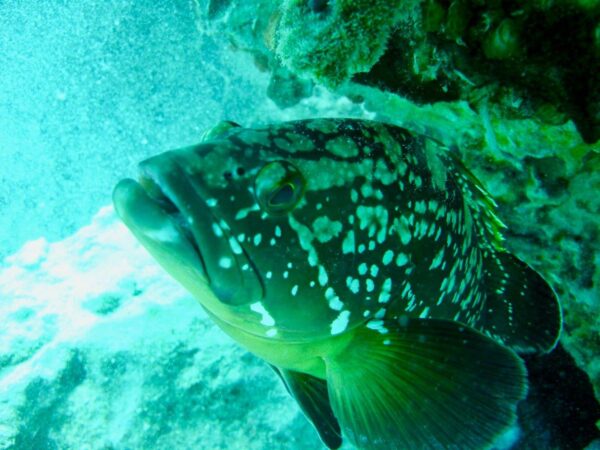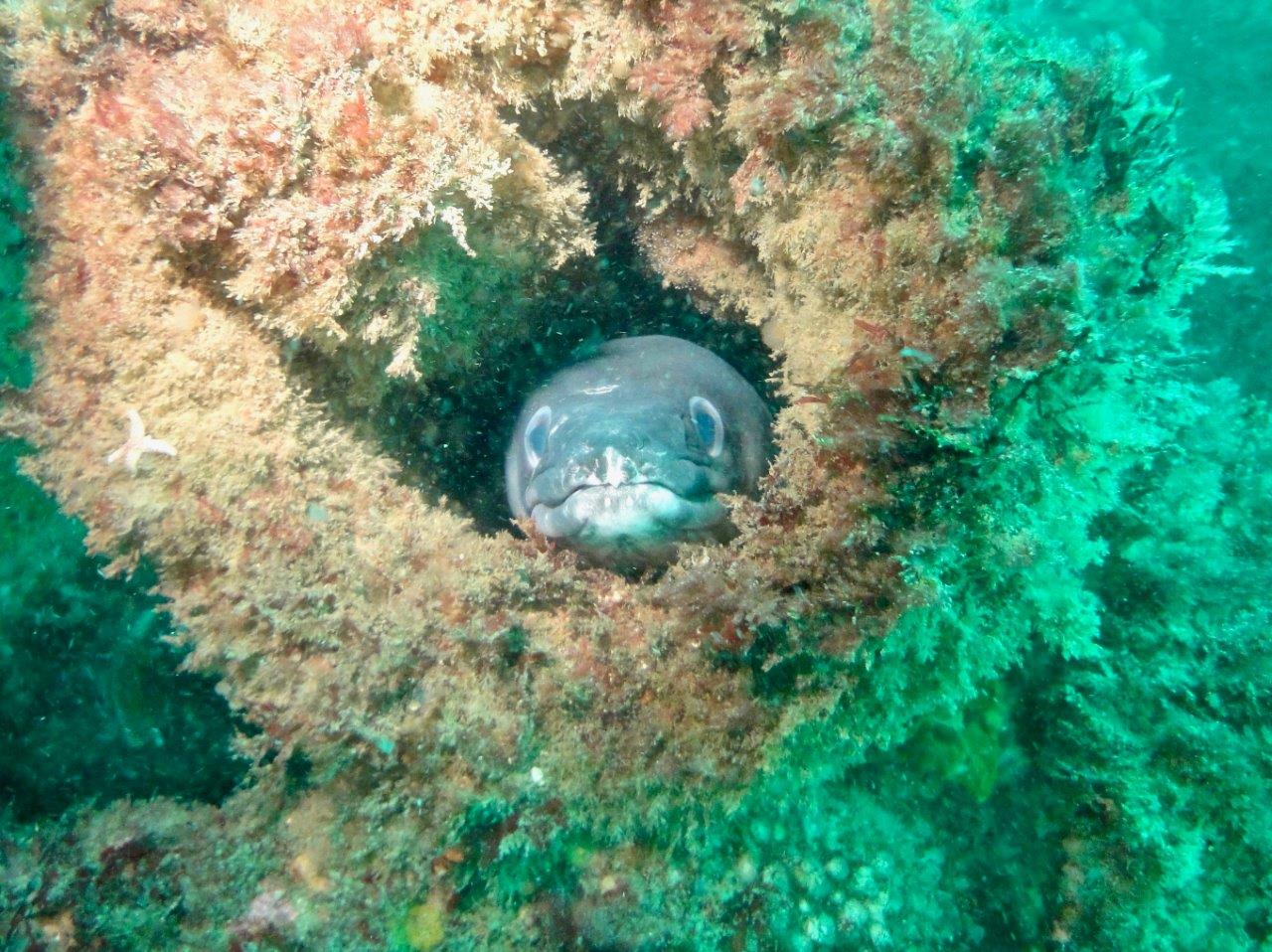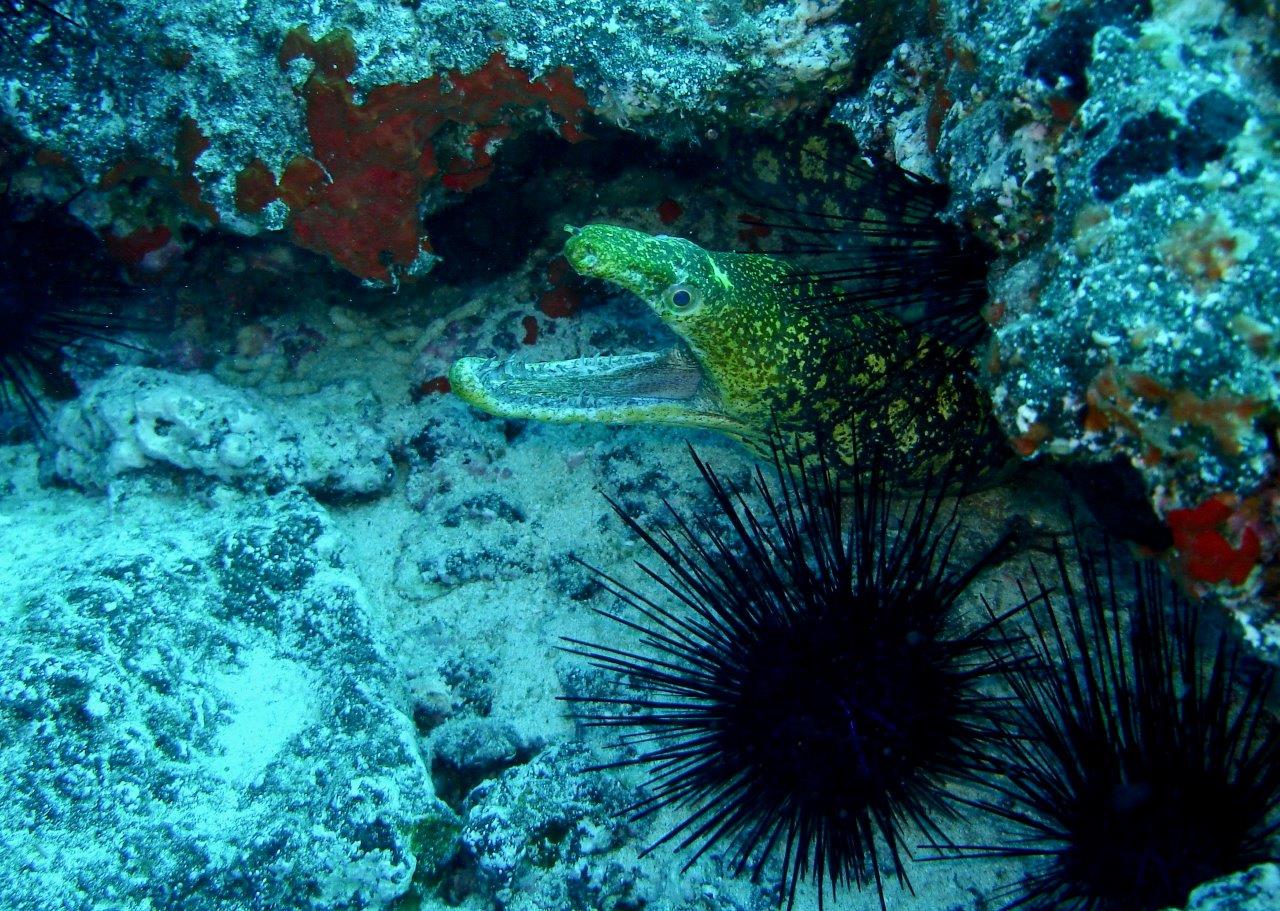The 10 best places for diving according to Liguria Nautica
This is the personal top 10 of the best European dives by our associate Paolo Ponga

This is the personal top 10 of the best European dives by our associate Paolo Ponga
- THE SHIPWRECK OF THE SUPERTANKER MILFORD HAVEN, ARENZANO, LIGURIA. ITALY
- ISLAND OF MANA, KORNATI ARCHIPELAGO, CROATIA
- BAJON DEL RIO, FUERTEVENTURA, CANARY ISLANDS, SPAIN
- THE MEUSE SHIPWRECK, DOUARNENEZ, BRITTANY, NORTHERN FRANCE
- THE SHIPWRECK OF THE GIANNOULA K, PLIMMIRI, RHODES, GREECE
- SCOGLIO DEL MEDICO, ISLAND OF USTICA, ITALY
- GROTTA AZZURRA, CAPO PALINURO, CAMPANIA, ITALY
- IL CENOTE, OTRANTO, PUGLIA, ITALY
- SECCA DELL’ISUELA, PROMONTORIO DI PORTOFINO, LIGURIA, ITALY
- FRESH WATER
When – a long time ago now – I began diving, the friends I met during my first dives would say to me: “Oh, if you don’t go to the Red Sea you won’t see anything”, or “the only place for me are the Maldives (or Polynesia, Zanzibar, the Great Barrier Reef in Australia, the Bahamas)”. Without fail, these were amazing places that were incredibly far, and far from my budget at the time. I “settled for” what we could call “back up” locations that are less well known or talked about in diving circles and are much closer.
I realised that going beyond the usual boasts by divers, and fishermen (“The fish was really enormous!”) even our old continent could still offer us underwater locations of great value and beauty. I discovered some that were truly spectacular or so they seemed at the time, and stayed with me. In the years that followed, I learned to love tropical seas but I also never forgot how beautiful the Mediterranean is, as well as how fascinating some areas of the European Atlantic are. So why not make a list of the best diving locations?
Certainly though, this is just for fun. What personally excited me, may not be someone else’s cup of tea. Or maybe I managed or missed the dive of a lifetime because of a couple of kilometres or days. But every diver worthy of respect is like, as we said, an old fisherman who always remembers their fish as bigger than it really was, and who still loves to share their adventures with their friends. So, why not?
Why not, this time, make a list of the most beautiful dives I have had in Europe, instead of describing those done by others? Why not challenge you to share yours or inspire you maybe to try somewhere new? Or simply just hear you say: “Nah, this one is much better”? And with spirit of a pensioner challenging his friends in the pub, I give you my very personal list of the 10 best places to dive in Europe.
THE SHIPWRECK OF THE SUPERTANKER MILFORD HAVEN, ARENZANO, LIGURIA. ITALY
The ship sank in 1991 because of a devastating fire of the crude oil stored in the hold, causing 5 victims, including the captain of the ship, the wreck is also known as the “iron shallows”, the “mother”, or “the beast” because of its exceptional size. Located on the sea floor at about 80 metres deep, it is almost impossible to visit fully and sometimes, there is incredible clarity, and there is always a large number of fish. With the right certificate, training and good overall physical condition you can dive slightly deeper than recreational diving with some decompression. You land on the poop deck at 33 metres, then go down to nearly 40, you go up the stairs leading to the bridge which you leave by going through the windows to go along the line leading to the collapsed stack. From here you go back up along the cable. On the dinghy you will find divers from all over the world, who have come to Italy specifically to visit her.
ISLAND OF MANA, KORNATI ARCHIPELAGO, CROATIA
A dive I did many years ago, with a lot of difficulty, but it still remains my most beautiful Mediterranean ridge. Hard to reach because of the bad organisation in those days: it was hard to find a wooden boat in Croatia, a Hungarian diving operation on the island of Dugi Otok, permits to enter the Park and the long journey by sea. The island is one of the 150 Kornati islands and is in the open sea, exposed to the winter storms which have split it in two. Imagine a figure eight split in half. A vertical ridge going straight down over 90 metres deep, with giant sponges and huge shoals of fish surrounding you, completely unafraid. I saw enormous rockfish and spider crabs that were frightening (to me) because of their size. Incredible visibility.
BAJON DEL RIO, FUERTEVENTURA, CANARY ISLANDS, SPAIN
I was advised not to even bring my gear: cold water, currents, no fish. It may well be, but I have discovered that anywhere there is enough water for diving I will find a happy surprise. Corralejo, on the northern coast of the island of Fuertaventura, is one of these places. I found a diving centre managed by a German, a Belgian and an Italian: very cosmopolitan…But there were nearly no Italian divers, they were all in the Mediterranean or the Red Sea. I had some beautiful dives with great water clarity and acceptable currents. The best of these is called Bajon del Rio (“down the river”), because of the current that is there sometimes, and it is located in the channel between Fuerteventura and the island of Los Lobos. The environment is semitropical on a sand sea floor with small mushroom-shaped coral, while its depth makes it easy and appropriate for everyone. The fish you encounter, which are not afraid of people, are extraordinary because they are part tropical and part Mediterranean or Atlantic, creating a mixture of species that is unusual to see: curious grouper alternating with large amberjack, cod, jurel, white sea bream, triggerfish, parrotfish, rays, arrow crabs, electric rays and much more. My last encounter was with a ray, a “chucho negro” of a colossal size: I never imagined there were rays the size of a small car.
THE MEUSE SHIPWRECK, DOUARNENEZ, BRITTANY, NORTHERN FRANCE
So exciting. Exciting for all the senses. A wavy metal grey sea, with an external temperature which is certainly not the norm for August and the underwater temperature of a warm lake. Simple people, Bretons, not French. Marvellous seafood with wine and liquors that warm you and encourage human contact. I met a group of experienced local divers who had acquired an old sardine fishing vessel, La Reine d l’Arvor, shortly before it was dismantled, and brought her back to her former glory. After having worked very hard to be accepted by the group, I had a number of marvellous dives in currents, tides and low visibility, always hearing the question “pardon, but tomorrow we are going on an épave, a shipwreck, is that a problem?” As if… One example was the Avviso Meuse which sank in unclear circumstances at the beginning of the second World War. When I left for St Malo it was as if I were an old friend leaving. They were truly upset and I couldn’t avoid pats on the back, rivers of cider and infinite glasses of Calvados.
THE SHIPWRECK OF THE GIANNOULA K, PLIMMIRI, RHODES, GREECE
A simple, little advertised dive that is very beautiful. Greece is famous for its turquoise blue water of different hues, its islands, beaches, small towns, food and its very sociable people, but not for its diving. The sea floor is usually not very attractive and there are not many fish, pillaged by local fishermen, there is very little to see underwater. And it was with this idea that I had a double dive on the shipwreck of the Giannoula K, a sunken mercantile 800 metres form the port of Plimmiri, in the south of the island. I had recently had a serious illness and two operations, that could have stopped me from this easy 21-metre-deep dive. And to top it off, just before the dive, my underwater camera broke. I decided to still go ahead and …my jaw dropped. Visibility for over 30 metres, the shipwreck looms up out of the sand surrounded by more fish than I had ever seen in all my Greek dives put together. A marvel. The first dive was spent going around the wreck and above it, while the second was inside, right through to the machine room. An incredible sight.
SCOGLIO DEL MEDICO, ISLAND OF USTICA, ITALY
This is one of the most famous dives off the Palermo coast but it isn’t necessarily the best. Getting to Ustica from Northern Italy is like going to the Maldives: car to the airport, fly to Palermo, transfer to the port, the never ending wait for the fast ferry, two hours on the boat at sea, and another transfer to the hotel. You leave at 8 in the morning and arrive at 11 at night on an island the size of a walnut. Then you discover the sea, the smells, the warm people, the fish, jasmine and almond granita and there are only two possibilities: you either fall in love or hate them forever. If you are a diver the first is certainly the case: there must be a reason that there are a dozen diving centres and only two or three hotels. And this is because of its famous grouper, constant barracudas, and marvellous sea floor, the Mediterranean in top form.
GROTTA AZZURRA, CAPO PALINURO, CAMPANIA, ITALY
Palinuro was the helmsman of Aeneas’s fleet and is now one of the two capitals for sea dives in Italian caves. I went to take a course with a great diver, the man who has mapped a large part of the caves in the area, Fabio Barbieri. Caves, as you know, can either be loved or hated, but they always give you butterflies: you can never go directly back up to the surface, you have the sensation that you are violating Mother Earth. Never underestimate them, as I had done a number of times before then. Among all the beautiful caves in Palinuro, the most famous is the large Grotta Azzurra, a dive that is not to be missed.
IL CENOTE, OTRANTO, PUGLIA, ITALY
“Today we are diving from the beach! You won’t regret it”. Is it true? Who knows. With a typical diving pick up we arrived in splendid Otranto, and then went down a path along the rocky coast. When the car stopped far from the sea, the other divers and I looked at each other: have they gone crazy? “OK guys, today we are diving from here, at the Cenote”. We looked out at the horizon and only saw rocks and the distant sea. The guide laughed, and then revealed to us a small hole, maybe about two by two metres in size: our entrance. With a very careful step we jumped in to find ourselves in a cave with a far off opening leading us straight to the open sea, with all the colours and life of the beautiful waters of Salento. A unique discovery.
SECCA DELL’ISUELA, PROMONTORIO DI PORTOFINO, LIGURIA, ITALY
During a trip I met a couple from Milan who told me to stop diving in the Mediterranean as there aren’t any fish: where do you live, I thought, on Mars? You live two hours away from one of the most beautiful places in the world to dive and you have never been there? They looked at me, perplexed, and told me I must be right, like you do to a child throwing a tantrum. Their loss. Because, with the creation of the Park, the fish have returned to Portofino, and how. Opposed at the beginning by the local fishermen who didn’t want to lose their traditional fishing grounds, it is now loved and respected by all: divers from all over Europe come to visit the marvellous seabed and the tourist industry has seen good returns, with jobs for everyone. The fish are not locked in by protective nets, and have multiplied, leaving the waters of the Park and allowing the fishermen to come back more heavily loaded than before. To give you an idea of what can be seen under water, once, in the month of July, I dropped down to the bottom and found myself face to face with a moray eel. Backing up a little, I lifted my eyes and saw four large grouper swimming around me, completely unafraid, and behind them were five large snappers swimming in the opposite direction. The scene continued (I was on show, not the other way around) until the arrival of the rest of the diving group. At this point, slowly, the two species went away, but the moray eel didn’t: it was probably wondering why we were bothering it. Add in shoals of white sea bream, a variety of other fish and a proper forest of sea fans and you will have a vague idea of the shallows of Isuela or other similar dives in the Park are like.
FRESH WATER
I wasn’t sure if I should mention it, but I am also a lake diver and I adore fresh water. I admit it, it is dark, cold, and induces anxiety, and not everyone likes to dress up like a Christmas tree because of the low temperatures, dragging with them torches as powerful as those used to guide airplanes. But there are fresh water dives that are easy and marvellous, for everyone. An example? The gorge of Sant’Anna in Val Cannobina. It is about 3 km from the point in which the Cannobino river enters Lake Maggiore, in the province of Verbania, in a place where the silence and nature offer complete peace. Here the river has carved a narrow gorge, crossed by a Medieval bridge and modern road, leading to the church of Sant’Anna (1683) and to a trail leading to the river. Here there is a small beach to rest and enjoy the sun, or to fully dress for a dive in crystal clear, cold (16 degrees in summer) water, inhabited by numerous brown trout. Having entered the gorge, the depth goes down to 13/14 metres to then slowly go deeper as you go further in, with unusual clarity allowing you to see the two underwater sides of the gorge as well as the bridges and trees out of the water. The dive ends at a waterfall. An incredible sight.
And yours? What are your best European dives? One of these or completely different ones?
Paolo Ponga











